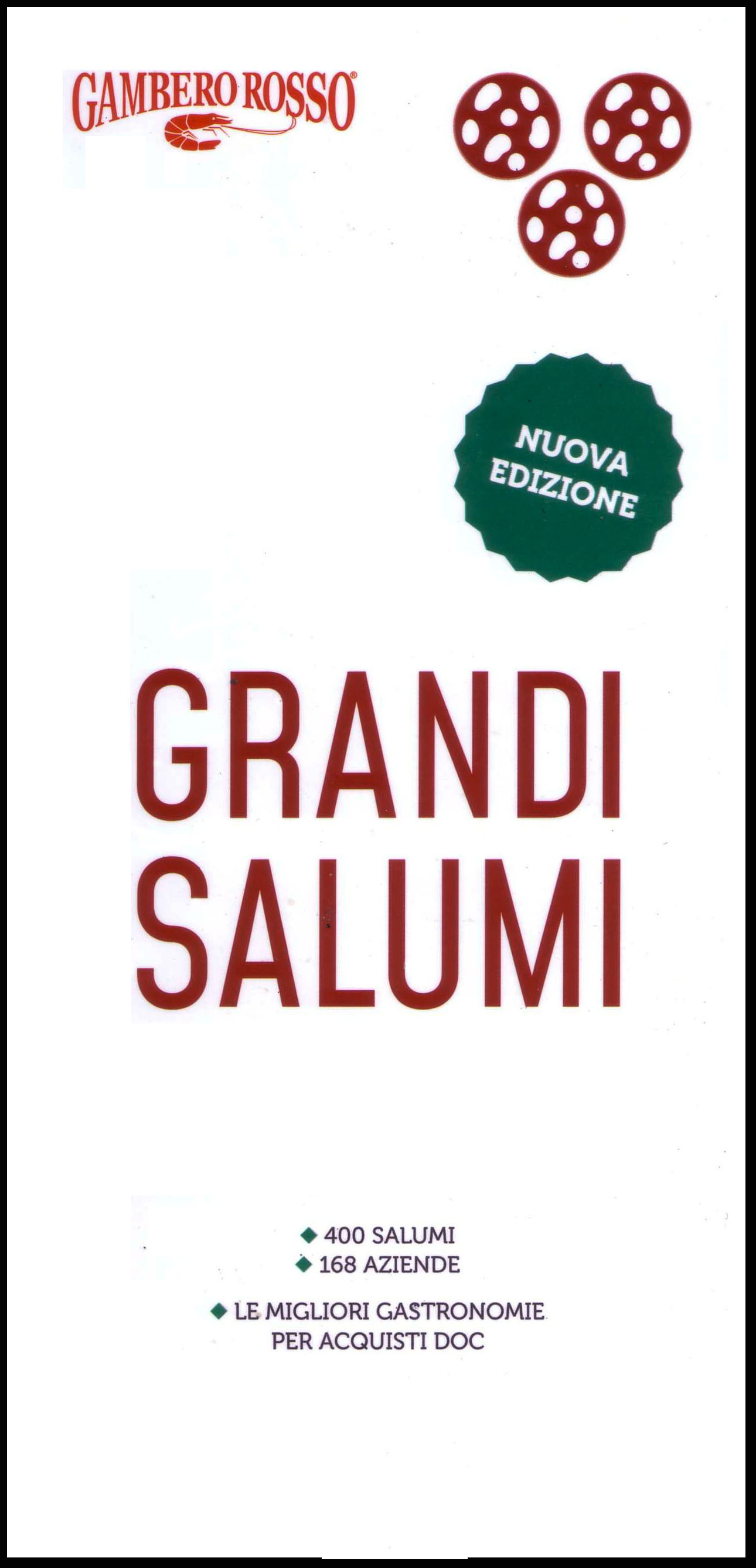"Grandi Salumi" Gambero Rosso 2023 - Emilia Romagna Region
With as many as 13 European denominations, truly originating in whole or in part from the region, Emilia Romagna would have no rivals in the Italian salami scene (and there are also 32 PATs). Much of the history of pork salting was born in the Piacenza area and in the Parma Food Valley, where Celtic populations, such as the Galli Boi, perfected the art and also graze in Salsomaggiore salt.
Cosi ('Emilia is the region of the finest "sweet" and seasoned cured meats. And the salamis too are prepared with simple recipes: coarse-grained, lightly spiced, with percentages of salt and pepper contained in to enhance, with a long maturation, the taste of seasoned meat. This occurs above all in the Apennine valleys, while along the Po towards Ferrara the Mantuan influence is felt and hints of garlic prevail.
It is no coincidence that starting from 1873 in Emilia Romagna and neighboring Lombardy, the breeding of heavy Italian pigs developed and perfected, with progressive genetic improvement, with crossbreeding of Nordic breeds with pink coats. But at the same time, Emilia Romagna has been able to protect two hardy breeds with a black coat, the Mora Romagnola (registered in the ANAS register of native breeds) and the Nero di Parma (in the register of newly established breeds), both capable of offering extraordinary cured meats especially hams, shoulders and lards. The province of Piacenza offers three PDOs that boast a long history: pancetta, salami and above all the coppa, which reached the peak of its success in 1700 when Cardinal Alberoni, minister of Elisabetta Farnese, queen of Spain, made it a diplomatic tool using it as a very welcome gift to the sovereigns of Europe.
In fact, the coppa, which is made throughout Italy under the name of capocollo or ossocollo, finds in the area between Pavia and Parma (where it is PGI) the right environments and atavistic ability to achieve long aging and exceptional aromas. If this also applies to bacon, salarne is instead penalized a bit by a permissive disciplinary, for which the quality and authenticity are safeguarded by some craftsmen proud of the millenary history of the local delicatessen, who often do not use the PDO.
The same problem concerns Felino Igp salami, highly sought after on the market for its softness, even after seasoning, due to the choice of thick, fat casing. In the Piacenza area, the priest's hat is particular, a cured meat to be cooked made up of the shin turned upside down in its rind.
Passing through the Parma area, here is the PDO Parma ham, so famous throughout the world that even in parochial France the ham is called Parma and the term jambon is reserved for cooked. The ratification of a new one is awaited by the EU
disciplinary that allows an increase in the size of the thighs to get closer to a tradition that would like pigs weighing 200 kilos and more, a tradition witnessed by the Consorteria della Spalla Cruda of Palasone, which provides for the processing of front legs of Po Valley pigs weighing from 220 to 250 kilos.
The latter is a rarity that joins two other extraordinary products from the Basso Parmense, culatello di Zibello Dop and the cooked shoulder of San Secondo. If Parma ham takes advantage of a particular microclimate of the hilly area, so suited to raw ham that hams from the rest of Italy are also aged here, culatello and raw and cooked shoulders are unique due to their very slow maturation in the mists del Po (without forgetting the more modest bow). Son of the culatello and the real strolghino, a salami with a diameter of only 3 cm made with the trimmings of the culatello itself.
Another typical salami in the area from Piacenza to Reggio is the mariola, large in size and with a fine texture, enriched with garlic and white wine, stuffed into pig caecum; there are two variants: raw from the slice, aged for up to a year, and from a pot like a cotechino, ready after a short seasoning.
In the Reggio area, in addition to culatte, culatelli and fiocchetti similar to those of Parmesan, there are salami (Fiorettino and those from Canossa and Castelnuovo) that come close to the Tuscan tradition, i.e. with lard and rather peppery.
The Modena area, where the Modena DOP raw ham, similar to Parma, is produced, is the center of gravity of cured meats to be cooked, with zampone and cotechino using the Igp, also in this case protected by a rather permissive disciplinary.
In Bologna we come across a "mythical" denomination, the Bologna PGI mortadella, a historic large-sized cooked salami made with pork, even poor meat, very finely minced and with lardons: the value lies above all in the aroma, which it must be intense but with natural and balanced hints.
In the Ferrara area, the classic salami is the zia, rich in garlic and thick, but the most important salami is the PGI sauce salami, stuffed into a bladder with a mixture of mixed meats (also with some of tongue and liver), enriched with pepper and lots of wine (often spices and brandy): it should be cooked for a long time and eaten with a spoon (in homeopathic doses). A particular cotechino should also be mentioned, the belecot di Russi, in the Ravenna area, made with muscular pork meat and rind.
In Romagna, in addition to the classic salami and whole cuts, dried sausages and sambudelli (similar to Umbrian mazzafegati) are widespread, made with paveri cuts of pork and offal. Finally, greaves and sausages to be cooked are widespread throughout the region.

